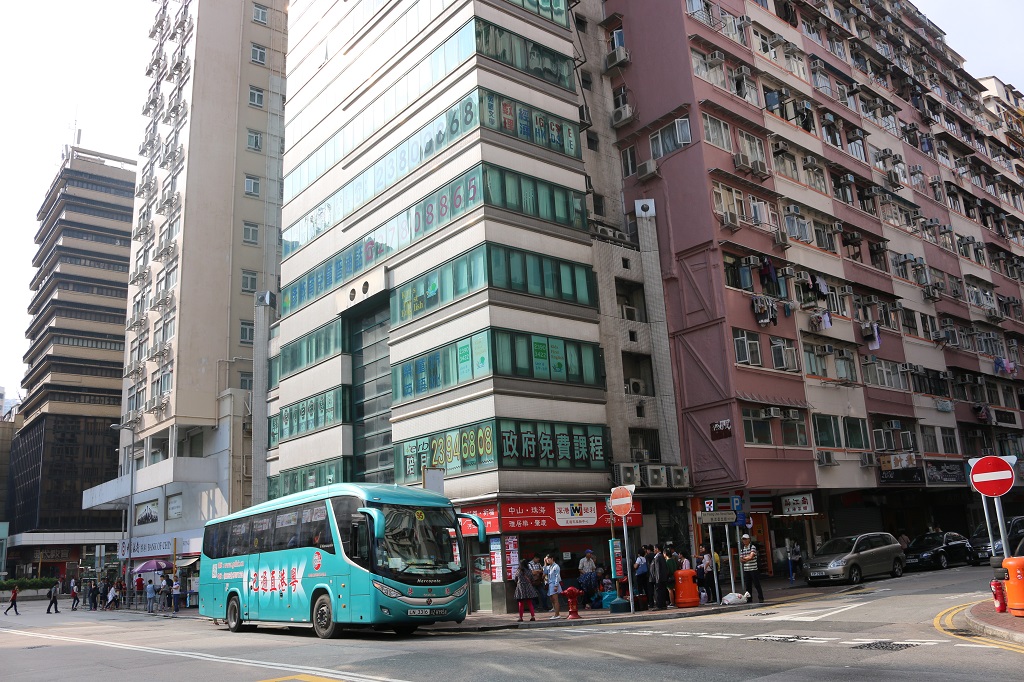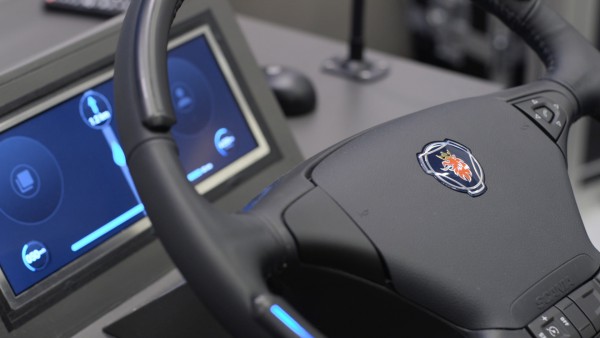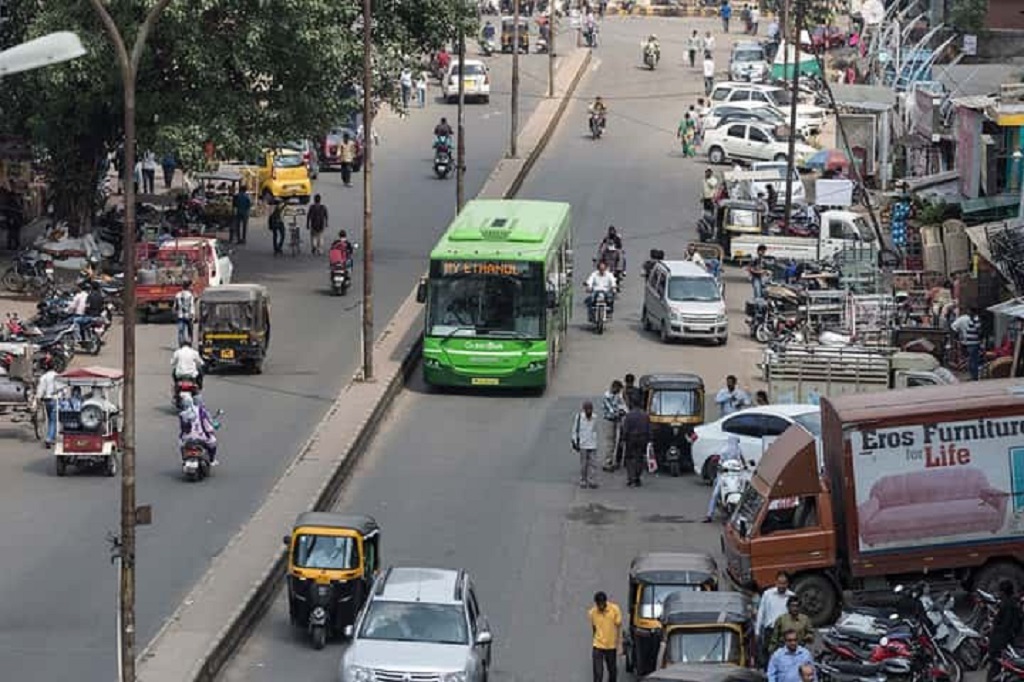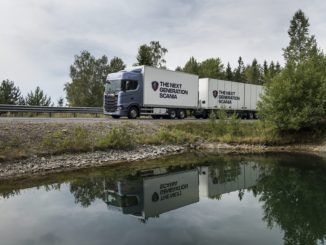This year 250 million passengers will cross the border between Hong Kong and Shenzhen in southern China. With driver training from Scania and an unconventional management style, the bus company GDHK has become a role model for the ever-growing cross-border market.
GDHK- The Motor Transport Company of Guangdong and Hong Kong – was the first cross-border transporter approved by the governments of Guangdong and Hong Kong. Its birth in 1980 started as a cooperation between Chinese and British authorities, and pioneered cross-boundary road transport of passengers and freight between Hong Kong and the Chinese mainland.
Since its establishment, GDHK alone has transported more than 40 million passengers and 3,3 million tons of goods across the Hong Kong-China border.
Densely populated
To Yau Ngan is one of GDHK’s 200 cross-border drivers. From the modest bus terminal in Hong Kong’s Mong Kok neighbourhood, one of the most densely populated places in the world, he drives his crowded bus north through the New Territories to the Shenzhen Bay Checkpoint and across the border into China.

As a result of driver training from Scania To Yau Ngan managed to reduce fuel consumption from 27 to just over 21 liters / 100 km.
According to the bus’s Fleet Management System display, his fuel consumption is 21.3 litres / 100 km.
“Before I started driver training with Scania, I used about 27 litres / 100 km,” To says, while waiting for his passengers to return from the Chinese border control checkpoint.
He got his new skills from Tiger Lo, one of Scania´s Driver Trainers, who coaches GDHK´s drivers at the GDHK office in Shenzhen. Tiger, who used to be a cross-border driver himself before joining Scania Hong Kong, trains GDHK´s drivers to drive more safely while also optimising fuel consumption.
The boss is the best driver
“The GDHK drivers are extremely motivated, partly because their own boss is one of the best drivers himself. He´s challenged all his drivers to drive more fuel efficient than he can,” Tiger says with a smile.

Scania´s driver trainer Tiger Lo and GDHK´s Director General Zhang Guang You, both have extensive experience of driving heavy vehicles cross-border.
The boss, Mr. Zhang Guang You, who is the Director General manager for GDHK, has a technical background. Now, in his unconventional, open style of leadership, he´s developed GDHK to set a benchmark and serve as a role-model for how other transport companies in China should behave and do business.
“To my knowledge we are the only transport company in this part of the world working so consciously and deliberately with changing the drivers behaviour,” he explains.
Safety bonuses
In order to drive a bus for GDHK, the driver must have at least three years of experience and 150,000 km of safe record behind the wheel. When employed, everything is about maximising comfort and safety for the passengers and profitability for the bus company. Alongside continuous training the drivers are encouraged by a comprehensive range of bonuses for both safety and fuel efficiency.
The driver´s behaviour is followed up through the Scania Fleet Management System, with a focus on fuel consumption and a smooth driving style.
“Today technology in our buses is very advanced. We need to train our drivers even more to fully take advantage of this development. I can see great opportunities to improve safety and fuel consumption even more,” Zhang says.
Big potential
So far Tiger Lo has trained 60 of GDHK´s drivers, with exceptional results. Almost all of them show the same improvements as To Yau Ngan.
“So, with a total of 200 drivers, the potential for GDHK is very, very big,” Tiger concludes.

Scania´s driver trainer Tiger Lo follows To Yau Ngan´s driving skills during one of the regular tours to Shenzhen in China.
Just 40 years ago Shenzhen, which sits just north of the border from Hong Kong, was a fishing and market town of 100,000 people. That changed in 1979 when Shenzhen was promoted to city status and in 1980 designated China’s first Special Economic Zone (SEZ). Since then, Shenzhen has become one of the fastest-growing cities in the world and has transformed – its metropolitan area now has a population of almost 20 million.
New super bridge
Hong Kong has 7.3 million inhabitants. Some areas are among the most densely populated in the world.
In 2018, the gargantuan Hong Kong-Zhuhai-Macau Bridge will become a new artery for the region’s continuously expanding transport network. The 50-kilometre link will connect Hong Kong, Macau and the Shenzhen/Guangzhou region, an area who’s combined population is more than 50 million. It will shorten the distance from Hong Kong to Macau and Zhuhai from 160 to 30 kilometres and reduce the journey time to within half an hour. Faster economic integration between Hong Kong and the region is expected with the increasing flow of people goods and capital.
“With the new super bridge in place the cross-border traffic will continue to grow fast. Today there are 1,400 registered cross-border buses. An additional 400 will be permitted by the Hong Kong government. Connecting Hong Kong, Macau and Zhuhai I can see fantastic new opportunities for our company,” Mr Zhang says.
“Looking forward to the future, we will continue to follow our guidelines and do our best to maintain and develop honest, safe, rapid and high-quality services, making even bigger contributions to the economic and trade exchange, prosperity and development of Guangdong and Hong Kong,” he concludes.





